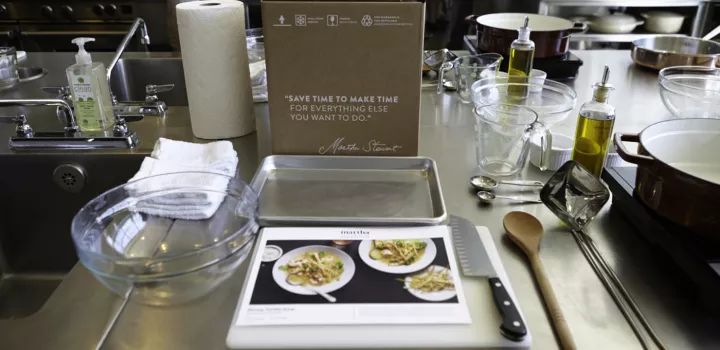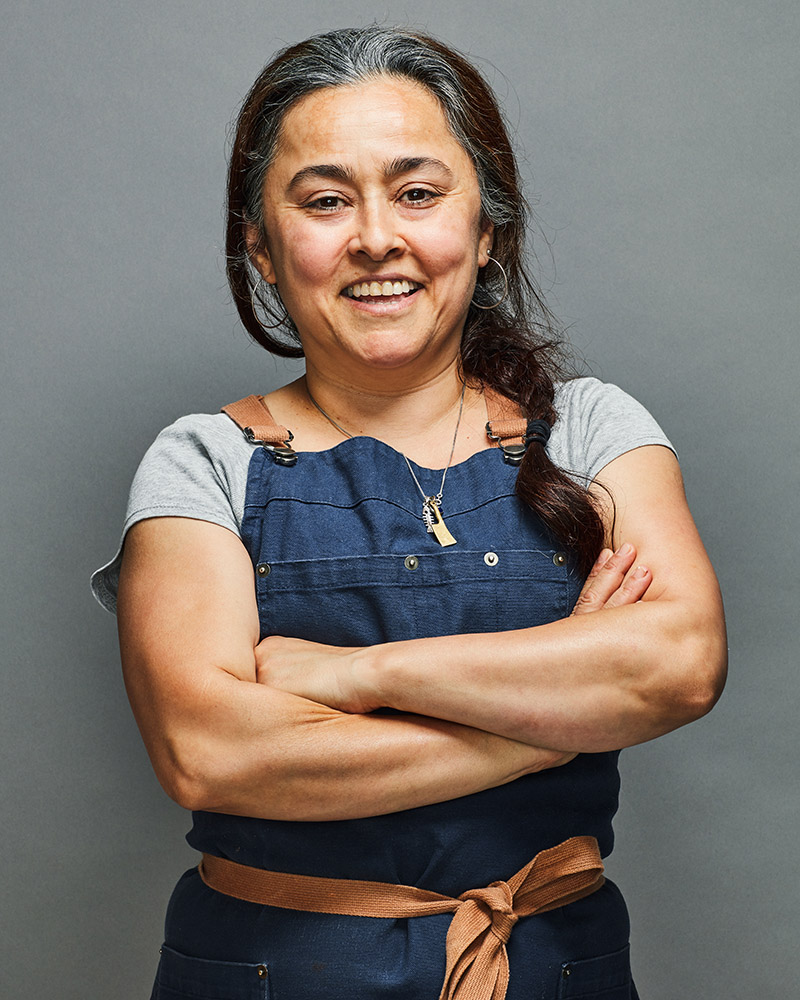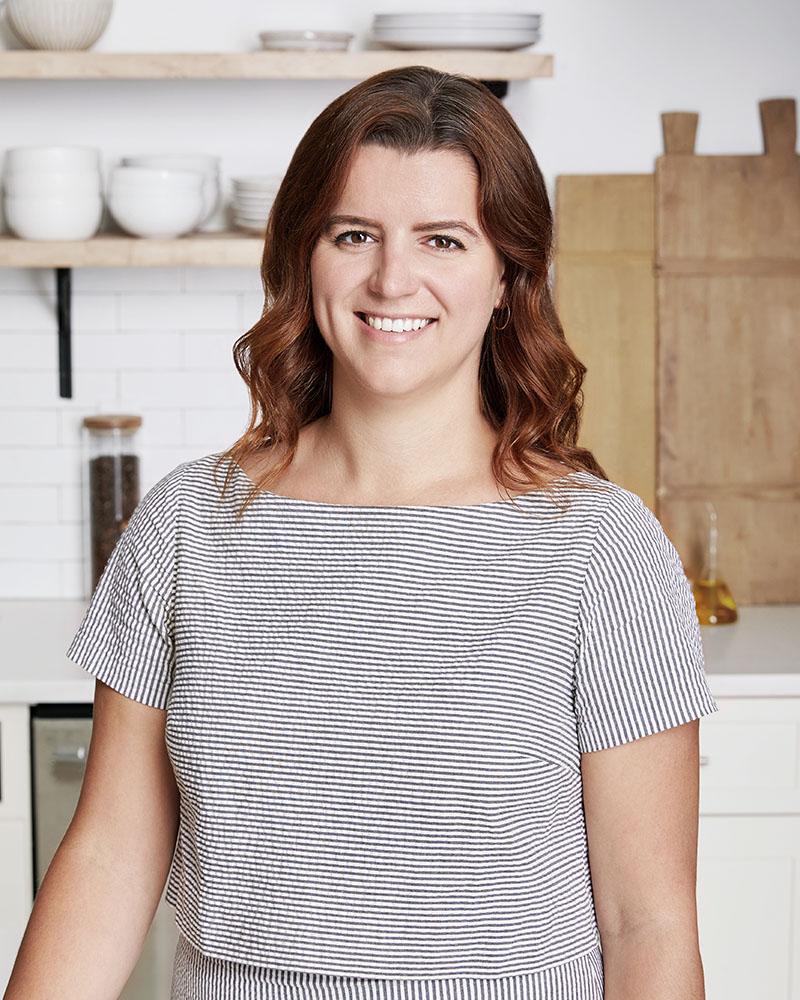
The Test Kitchen Evolution
ICE alumni share what it's like to work in test kitchens as the concept expands beyond editorial brands.
From the revival of traditional editorial test kitchens to the introduction of meal kit delivery companies, recipe testing is on the rise.
In 2015, the LA Times asked the important question, “Is recipe testing a vanishing art?” Four years ago that may have been the case. At the time, the internet was newly and noticeably saturated with uncredited publications like blogs posting recipes that had likely not been tested by anyone other than the creator. Such recipes would pop up among those of Bon Appétit, Food & Wine and Saveur in Google searches, creating a jumbled level of reliability and perhaps devaluing the recipes that had been tested to perfection. While the internet is still swimming with recipes of mixed quality, recipe testing has far from vanished.
While some publications and food companies use home recipe testers, most serious food brands operate a test kitchen in which every recipe is tested multiple times by multiple professional cooks before it’s published. This ensures the home cook will have the absolute best chance of success when trying the recipe at home. Traditional editorial food brands have been developing original recipes for print in test kitchens for years. The rigorous recipe development process didn’t change with the advent of the internet – the caliber of recipe remained the same for these brands’ digital publication.
A big evolution in traditional test kitchens is the enhancement or replacement of digitally published recipes with video. Digital-only brands like Buzzfeed’s Tasty and Vice’s Munchies have emerged with their own test kitchens, creating viral cooking videos that garner millions of YouTube subscribers (14.6M for Tasty and 3.1M for Munchies at time of publication). In order to stay current and avoid being left in the dust, food brands founded on editorial publishing were thrust into the video making business.
In a sink or swim situation, Bon Appétit might as well be an Olympic swimmer. The brand capitalized on its existing strength: a team of talented test kitchen editors with personalities made for computer and iPhone screens.
“I actually saw the whole transition,” says ICE alum and test kitchen manager Gaby Melian (Culinary/Management, '05, Pastry, '06). “I remember when they launched the first video. It was a big deal and now it happens all the time.”
The Bon Appétit YouTube channel has 3.9 million subscribers and multiple series, like “It’s Alive with Brad,” which is hosted by ICE alum Brad Leone (Culinary, '11) and has built a dedicated fan base in its three seasons. Brad, who started as a dishwasher in the Bon Appétit test kitchen, is now an internet celebrity and food influencer with 342.6k followers on Instagram.

As the Bon Appétit team achieves stardom, Gaby keeps the test kitchen running smoothly. She buys all the ingredients for recipe testing at stores like Whole Foods, Eataly and Kalustyan’s. She also cross-tests recipes, which she says is typically done at least six times.
“Shopping for food is one of the main things I do. It takes a good part of my morning. I love it — not so much in winter — but in summer I love it,” Gaby says.
Just a few years ago, securing a job like Gaby’s at a magazine was the only way to work in a test kitchen. Now, there are tons of companies that offer chefs the opportunity to cook for a living with office-like hours. That’s an advantage of working at a meal kit delivery company, according to Marley Spoon Test Kitchen Assistant Molly Kaplan Krueger (Culinary, '18) and Blue Apron Recipe Tester Sarah Entwistle (Culinary, '18).
“In today's world, working in a test kitchen empowers chefs to cook and be creative in an environment that provides a fair salary, benefits, paid-time off, and weekends spent with family and friends,” Sarah says.
Meal kit delivery test kitchens use a similar recipe development process as that of editorial brands, with multiple rounds of testing, but the chefs must abide by even more precise guidelines and constraints due to mass ingredient availability and customer ability and preferences. Molly and Sarah agree this can be a bit stifling to their creativity, but they love problem solving and cooking new recipes regularly.
“I get to make new dishes everyday,” Molly says. “I like the cerebral nature of it. It's like a food experiment where you keep changing small things about a recipe to get it perfect. I feel more intellectually challenged in a test kitchen.”
Sarah concurs, comparing the development of new recipes to solving a giant puzzle. She especially enjoys collaborating with her team, providing feedback on what she’s cooking, and feeling like her voice is heard and her opinion matters. Sarah and Molly both recommend working in a meal delivery kit test kitchen to new culinary school graduates looking for careers outside restaurant and catering kitchens.
Meal kit companies aren’t the only places with test kitchens, though. After some menu change failures, Shake Shack opened a test kitchen in New York City’s West Village in 2018. The Innovation Kitchen serves test menu items to customers in a Shake Shack upstairs to gauge reactions. Citi launched a test kitchen at Urbanspace @ 570 Lexington, a food hall in Midtown NYC, to help support local culinary entrepreneurs. For three months at a time, it hosts resident chefs who are trying to grow their businesses. Even McDonald’s moved its headquarters and test kitchen from the Chicago suburbs to the city to recruit young, inventive employees.

“I think test kitchens are a great way for companies to attract a new wave of culinary talent that wants to be a part of the food industry while still maintaining a work-life balance outside the kitchen,” Sarah says.
Fine dining landmark, Bouley, moved from its longstanding Tribeca location to Flatiron in 2017, where the five-course lunch is served in the test kitchen from Monday to Saturday. Culinary Arts student Biljana Tarascio, who is already working as a garde manger at Bouley, says this makes the test kitchen ideal for those eager to work morning shifts, when lunch is prepped.
“The menu is more flexible on that side of the restaurant,” she explained. “Chef Bouley is constantly trying to learn more about the newest trends in health and nutrition. He’ll change ingredients for nutritional value.”
The test kitchen also serves as a large private event space for Bouley’s cooking classes and The Chef and the Doctor series. “Chef is working really hard on merging healthy foods with the high French and Japanese fusion cuisine,” she says.
With traditional companies finding new purposes for their existing test kitchens and startups appearing with test kitchens of their own, the future of recipe testing has never looked brighter.
Learn the fundamentals for a future in recipe testing with our Culinary Arts program.


Add new comment